Amazing ducks, cranes, swans, pheasants and geese from around the world

A few friends and I went to visit this wonderful place in mid-March, a cold and windy, overcast day. But it was a blast, despite the weather. What a rich variety of teals, small dabbling ducks found around the world. The one above, the Baikal Teal, comes from Asia. Below are a couple of other pictures of the male.


The following, in order of appearance, are the Ringed Teal (4 pictures,) the Silver Teal, the Green-winged, and the less exotic Marbled Teal.









Taking a break from the ducks for a moment, the first thing we saw (and heard!) when we arrived were the 2 Siberian cranes. (Two of only 19 in the USA – considered endangered world-wide.) It was hard to get far enough away from them to get the whole bird in a shot!



Also very impressive were the Red-crowned cranes – also easier to photograph! Unfortunately, this magnificent Asian crane is also endangered. (I love the last picture: all that picking for a tiny grain of something – which he seems very happy with!)




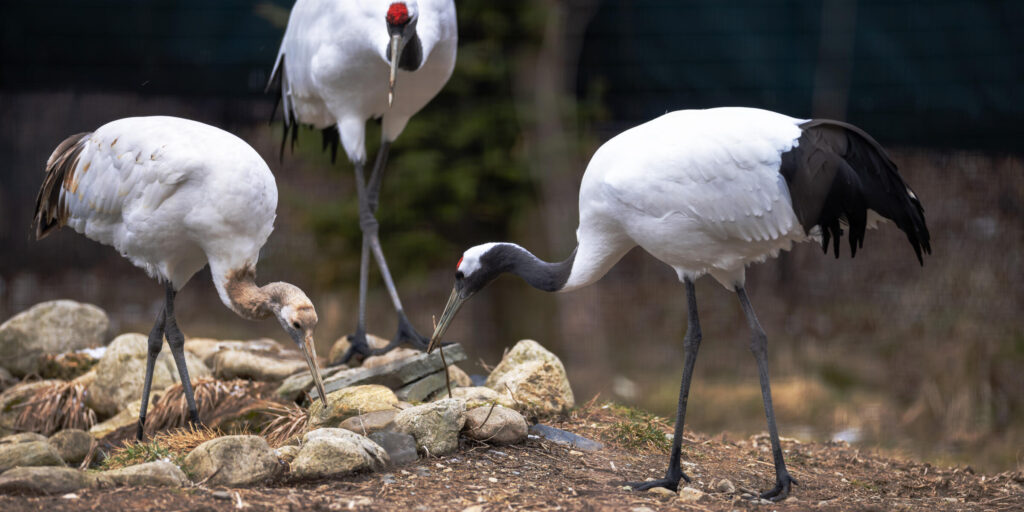







And finally the très elegantes Demoiselle Cranes.






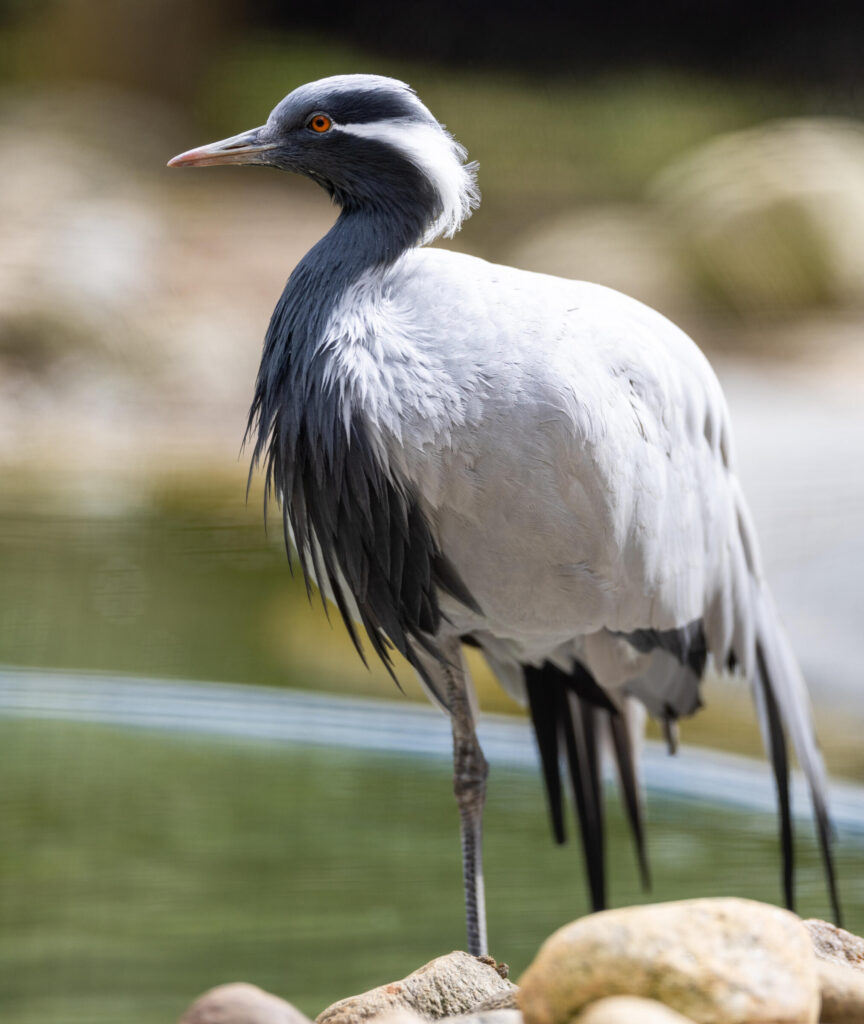

While on the subject of long-necked birds, how about these swans. The first are Whooping swans, native of Iceland and the British Isles, seen here in full whoop. While not yet endangered, they are listed as Amber because of danger to the wetlands on their migratory path.


The Black Swan is always stunning, but these two were right up in our faces and it was hard to get a decent shot with my long lens. The little white one at the end of the group was a Tundra Swan, born to a pair right there at Ripleys. Apparently getting them to mate in captivity is not easy.




Back to the ducks – there were 3 types of Eiders swimming with many other ducks together. First the Common Eiders. It was a cold day and many of the Eiders were tucked in and keeping warm!




Next are the spectacular Spectacled Eiders which breed in the Alaskan and Russian tundra. From the All About Birds webpage: “During summer, Spectacled Eiders “dabble” for food in shallow water like a Mallard. Out at sea in the winter, they transform into deep-sea divers, swimming as far as 250 feet underwater to pull clams and other invertebrates off the seafloor.”
To find out where they molt and spend the winter, “scientists with the U.S. Fish and Wildlife Service attached satellite transmitters and tracked the birds by aircraft. They found them congregating in ice-free areas of the Bering, Chukchi, and Beaufort Seas. The oldest Spectacled Eider was at least 18 years old when she was recaptured and released during a banding operation in Alaska.”
Here you see several portraits and also shots of them splashing in the water and finally with a Harlequin and a Long-tailed duck in one shot. They all seemed to get along fine.










And then, moving on to the most amazingly decorated of the eiders that we saw – the King Eider! Also an arctic tundra bird, they are found more to the east in Canada but have sometimes been spotted in the Great Lakes regions. During our visit they were more tucked in, out of the cold, than any other bird but I was able to get a few shots when they untucked for a moment or two. What a cool headdress!







Maybe the most striking of the ducks was the Smew, a small, uncommon diving duck.




Another black and white bird, also striking, is the Barrow’s Goldeneye. So cute!





This bird looked to me like a Cinnamon Teal but it turns out it is called Baer’s Pochard.
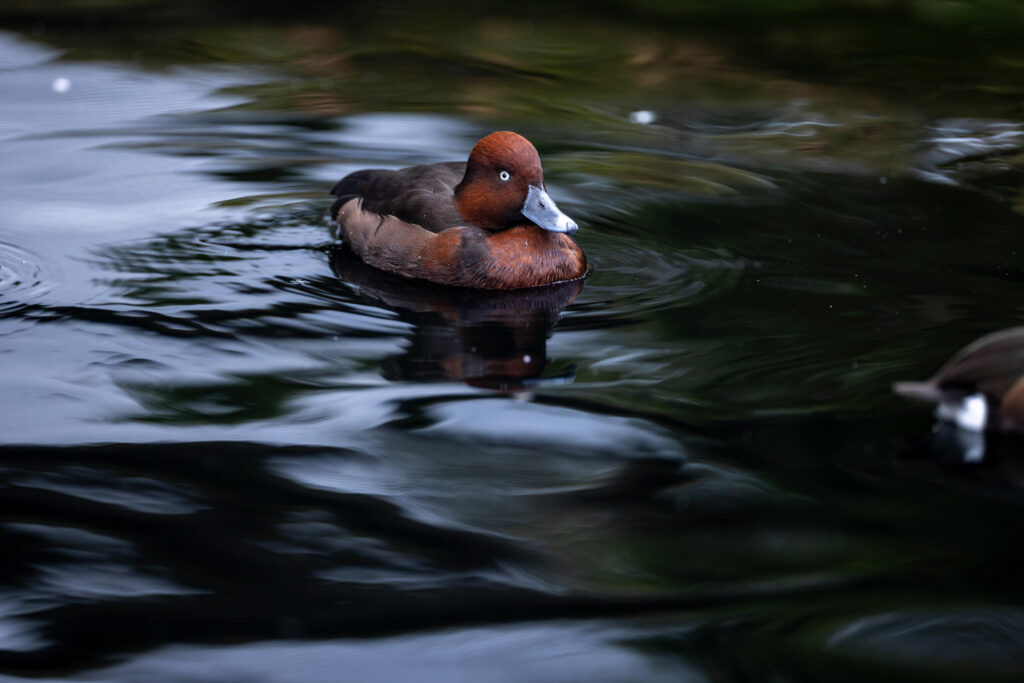
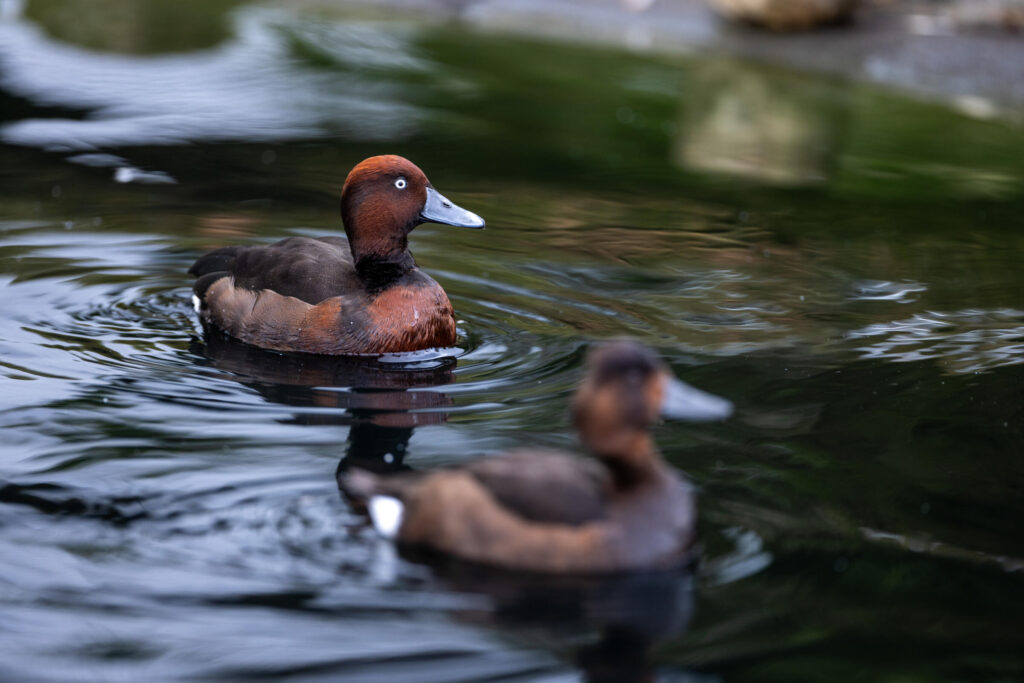
A bird which can often be seen in places like the coast at Gloucester, MA is the Harlequin, but I haven’t yet seen one in the wild so it was fun to get a close up look at Ripley. And keeping an eye on one of them was the Long-tail duck, another bird I have been looking for this winter but haven’t been able to spot. And that is a long tail indeed! But even aside from the tail, it is a sweet looking duck!









The Philippine duck hales from – the Philippines, of course. Another pretty one, if not exactly exotic looking.

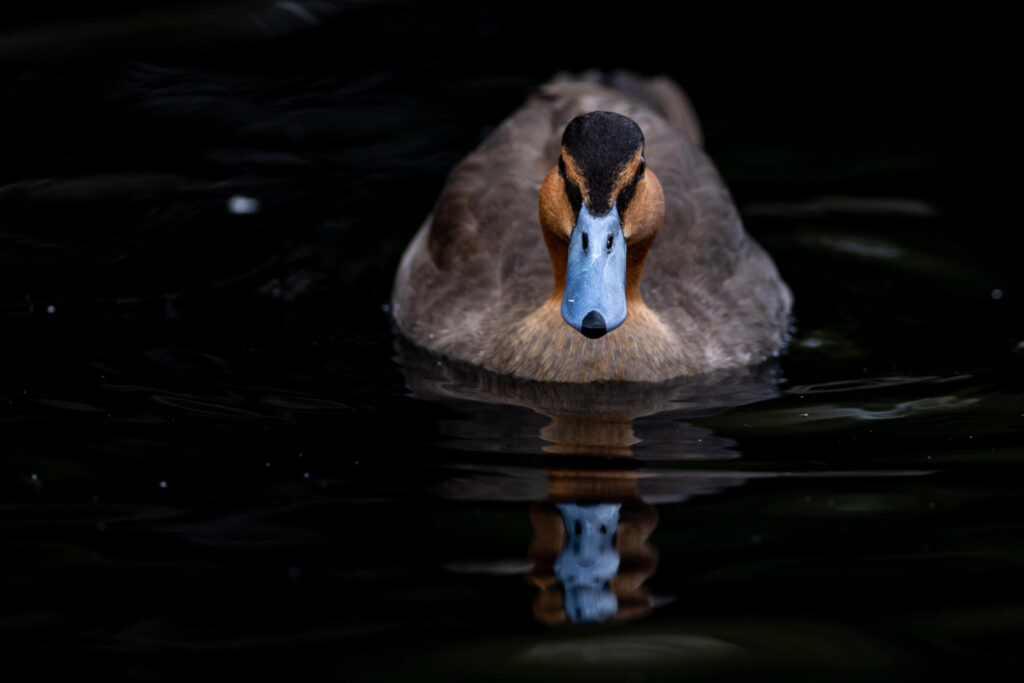


The oldest duck at the Ripley Waterfowl Conservancy was the White-winged Scoter. Apparently the oldest found in nature was about 18 years old and I think this was almost that old, though I don’t remember exactly what we were told. I first spotted her in the back, out of the water resting but when she hopped into the water, she looked as spry as all the rest. To me the long over-beak makes her look like she is sticking out an orange tongue.





The Scaly-sided Merganser was the crazy duck in the ponds. Our guide said she hoped these birds would set up their nest soon so that the males would stop buzzing around like maniacs.











Some geese live there as well. The Lesser White-fronted geese were fun to watch and the Greater White-fronted were quite beautiful. I think I missed quite a few of the geese but will look more carefully next time.








And finally some very exotic pheasants. Two lovely large white pheasants: The Silver pheasant, followed by one picture of 2 White-eyed pheasants.






Now come the colorful guys: The Taiwan Blue, Temnick’s Trabogan, the iridescent Himalayan Monal, the Cabot Trabogan, and the extraordinary Chinese Golden pheasant. Enjoy! (The last one is perhaps the most amazing of the bunch, though he had some good competition!)














I missed quite a few beauties and will definitely be returning when they open to the public in May. I recommend it to anyone in the area. (Litchfield, CT.)
Beautiful captures of this stunning group of natures finest!!
Thank you for taking the time to look through them!
Amazing post Marjorie! What a sight. jon
Thank you for taking the time to look through them!